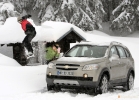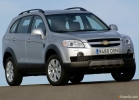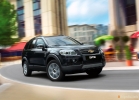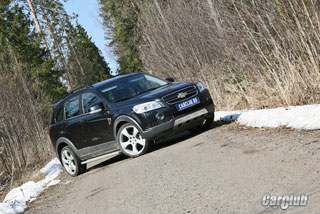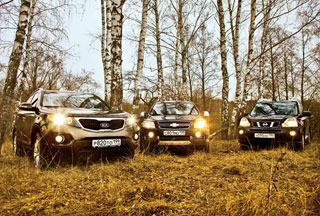CHEVROLET CAPTIVA test drive since 2006 SUV
Arks
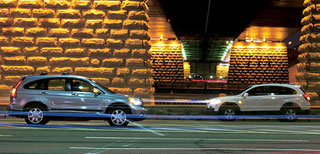 What words were not invented to confuse the buyer. Here, for example, Chevrolet Captiva is a medium -sized Sport Utility Vehicle. What sports should you do when 133 horses under the hood? Or Honda CR-V-a car for any situation and for all occasions. So that's why he began to look so belligerent, as if he calls Hammer himself to the duel? But in fact, both are quiet, comfortable and spacious city shuttles designed to carry food, stroller, diapers, dad to work, mother in megamoll, mother -in -law for a summer house, a dog on a milestone and all that. Earth values.
What words were not invented to confuse the buyer. Here, for example, Chevrolet Captiva is a medium -sized Sport Utility Vehicle. What sports should you do when 133 horses under the hood? Or Honda CR-V-a car for any situation and for all occasions. So that's why he began to look so belligerent, as if he calls Hammer himself to the duel? But in fact, both are quiet, comfortable and spacious city shuttles designed to carry food, stroller, diapers, dad to work, mother in megamoll, mother -in -law for a summer house, a dog on a milestone and all that. Earth values. 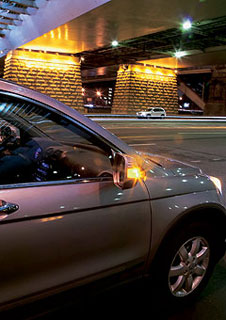 The Chevrolet Captiva uses a full -wheel drive system with an electromagnetic coupling and electronic control. When the leading front wheels slip, the torque on the rear axle is transferred in just one tenth seconds. The Honda CR-V, with an established movement, is also driven by front wheels. Within their slip, the rear are connected using hydraulics and a multi -disc coupery. Honda engineers assure that in terms of their main characteristics, their Real Time 4wd is comparable to more complex electronic systems. They achieved a faster and more softer inclusion of all -wheel drive due to two hydraulic pumps and a special fist mechanism that can recognize instant slippage. Real Time 4wd has established itself well on the previous CR-V, but was improved-now an increased torque is transmitted to the rear axle. Chevrolet Captiva has become the fourth car of the SUV class from the large General Motors family, the production of which is established in Russia. The first -born was a compact SUV Chevy Niva, then new Tahoe and Trailblazer from Kaliningrad appeared. The niche of the new items is determined with jewelry accuracy - this is a golden mean between a large gluttonous jeep and an economical all -wheel drive city parking lot. There are few similar cars on the market, so the demand will probably be high.
The Chevrolet Captiva uses a full -wheel drive system with an electromagnetic coupling and electronic control. When the leading front wheels slip, the torque on the rear axle is transferred in just one tenth seconds. The Honda CR-V, with an established movement, is also driven by front wheels. Within their slip, the rear are connected using hydraulics and a multi -disc coupery. Honda engineers assure that in terms of their main characteristics, their Real Time 4wd is comparable to more complex electronic systems. They achieved a faster and more softer inclusion of all -wheel drive due to two hydraulic pumps and a special fist mechanism that can recognize instant slippage. Real Time 4wd has established itself well on the previous CR-V, but was improved-now an increased torque is transmitted to the rear axle. Chevrolet Captiva has become the fourth car of the SUV class from the large General Motors family, the production of which is established in Russia. The first -born was a compact SUV Chevy Niva, then new Tahoe and Trailblazer from Kaliningrad appeared. The niche of the new items is determined with jewelry accuracy - this is a golden mean between a large gluttonous jeep and an economical all -wheel drive city parking lot. There are few similar cars on the market, so the demand will probably be high. Produced in Svidon at the British enterprise of the Honda CR-V of the third generation is supplied under another sauce. This is a universal car. And it is designed to lure the drivers of cars D- and even C-class to its side. That is why it is somewhat stand out from the row with decoration and equipment.
However, the difference is purely formal. The characteristics are close, and the true purpose is generally one to one.
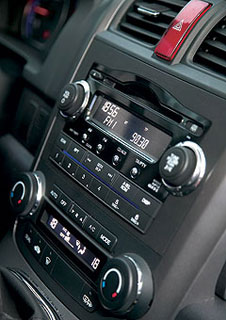 Jacuzzi with all -wheel drive. Agree, the strange name for the car is Captiva. Officially, this is a derivative of Capture (capture). But it is just consonant with the word CAPTIVE (captive). And in a Russian person, he generally causes an association with smoked meats. What Chevrolet do you prefer - cold or hot Captiva? I decided for myself: cold, with a 133-horsepower gasoline heart. Moreover, the color of the car should be like a jacuzzi - snow -white. You will sit in this SUV and feel that life has been a success, even if the level of self -realization is still far from one hundred percent.
Jacuzzi with all -wheel drive. Agree, the strange name for the car is Captiva. Officially, this is a derivative of Capture (capture). But it is just consonant with the word CAPTIVE (captive). And in a Russian person, he generally causes an association with smoked meats. What Chevrolet do you prefer - cold or hot Captiva? I decided for myself: cold, with a 133-horsepower gasoline heart. Moreover, the color of the car should be like a jacuzzi - snow -white. You will sit in this SUV and feel that life has been a success, even if the level of self -realization is still far from one hundred percent. He does not betray his cheapness. Only you know that the price of Captiva is less than $ 30,000. Everyone else will see a very solid car in it. The Galaxy White parade will provide not only proper pathos. No other coler (and eight all kinds of metallics are proposed) emphasizes so well Captiva. Its forms are a separate conversation. Stampovka on the hood makes you remember Ksyusha Volvo. Circular face and headlight profile - VW Touareg. The sides of the body, dissected by the longitudinal line, is the Audi Q7. Rudimentary gills of all -terrain vehicles Land Rover are visible behind the front arches, and the rear roof stand looks a little like Kainenovskaya. That's just the feed turned out. You call on all the imagination to remember how the ass looks, and the memory refuses.
Speaking out, then at first you treat Captiva with distrust. As to the box of business lunch with natural meat-it looks appetizing until you mold boiling water. Still, they began to develop a car back in 2003 in Korea. They collected it in Russia in temporary workshops of the future GM plant in Shushars. Yes, and they would surely equip it richly, in the traditions of Chevrolet. However, none of my fears have been confirmed. On the same platform, the latest Opel Antara - SUV, which is positioned by the class above. The car interior is convenient, spacious and has adjustable rear seats. The trunk has a decent capacity (despite the presence of folding seats of the third row), and with a folded second row of womb, it becomes huge. Building flaws are not visible. Handles, buttons, pedals in place. The air conditioner is primitive, but blows powerfully and frostbite. The equipment includes even parking sensors.
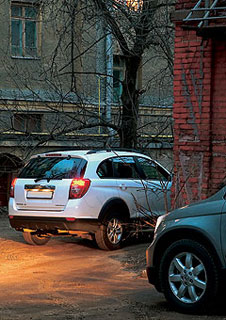 Pan-Sportsman. Honda also reached the SUV in the construction of SUV. The first generation of CR-V cars-by the current standards of unpretentious, and even on small wheels-came out in 1995 and was able, figuratively expressing, opening the Japanese company Window to Europe wide. If you add to the first generation sales and the second that saw the Old World in 2002, then a total CR-V was sold as many as 2.5 million.
Pan-Sportsman. Honda also reached the SUV in the construction of SUV. The first generation of CR-V cars-by the current standards of unpretentious, and even on small wheels-came out in 1995 and was able, figuratively expressing, opening the Japanese company Window to Europe wide. If you add to the first generation sales and the second that saw the Old World in 2002, then a total CR-V was sold as many as 2.5 million. Naturally, the current Honda brainchild is designed to further strengthen success. But what? Utility? Equipment? Comfort of the business class? All this has been done.
This time, Honda decided to play muscles. The new CR-V appears in the guise of a sports car. In fact, if you look at the performance characteristics, he barely draws at the teacher’s teacher, but looks, agree, like an Olympic. CR-V's face got a smile of the champion, a strong jaw and a self-confident gaze of headlights (a much more advanced design than on his predecessor). Not only Anfas is remembered, but also a profile. The contour of the body remained a minibus, but do you notice it? Chromewright Kant, which surrounds the side windows with an ellipse, causes the feeling that you are facing a purebred sports car, and not the hostel of the station wagon. The board has acquired a much more complex and dynamic profile. The wheel arches were strengthened (by the way, by no means a decorative measure - to improve handling, the Japanese expanded the track). And the dimension of standard wheeled wheels is 17 or 18 inches.
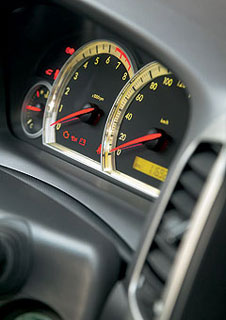 There are also many constructive changes. The interior has become wider, high -strength steel is used in the manufacture of the body, the center of gravity of the car decreased by 35 mm. The fifth door opens up, not sideways. In the trunk you find an additional hard shelf that eliminates the eternal freight problem. Now, in order to put something larger and more massive (as well as to extract back), you do not need to portray a chicken, which rakes every kind of sort with its paws-small things can be stored separately.
There are also many constructive changes. The interior has become wider, high -strength steel is used in the manufacture of the body, the center of gravity of the car decreased by 35 mm. The fifth door opens up, not sideways. In the trunk you find an additional hard shelf that eliminates the eternal freight problem. Now, in order to put something larger and more massive (as well as to extract back), you do not need to portray a chicken, which rakes every kind of sort with its paws-small things can be stored separately. Finally, a lot has been done to increase safety. The front skirt turned out to be such a cheekbone not to shine with beauty, but to protect the equipment and pedestrians from fatal damage. For the surcharge of CR-V, you can equip an adaptive cruise control with radars and the CMBS system, which, having caught a quick reduction in the distance to the in front of the car, will give the command to the driver brake!. And if he considers this for a bad compliment and does not react in an emergency, then the system itself will take measures.
The standard captiva equipment of even the initial configuration includes ESP, parking sensors, folding mirrors with electric drive and heating (for LT-with integrated twists), roof rail, CD/MP3-system and folded seats of the second (and third,, If the machine is seven -seater) rows. However, there is no heating of the front seats, which is quite strange. CR-V has four configuration levels (S, LS, ES, EX). In the initial, both the heating of the seats and the advanced set are provided
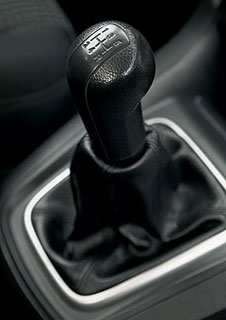 ABS, EBD, VSA and TSA (the latter is responsible for stabilization of the trailer), but does not rely on music. In the ES version, an audio system, light sensor, rain sensor, mirrors, cruise control and a number of functions are added. Parctronics is laid by state only luxury CR-V with a panoramic roof, xenon and leather interior. On a horse. According to the level of acoustic comfort, Captiva loses CR-V a little-the Japanese has a better sound compartment in the Japanese. In terms of smoothness, both cars are comparable to class D sedans. They do not swing, like heavy SUVs, are more stable with sharp braking. CR-V has a very acute controllability, and on the asphalt canvas with a trampled rut behaves at all as a sports car on low-profile rubber-it strives to jump out. Captiva is indifferent to the rut, the steering is softer and dumber, but do not think that the jacuzzi is not able to perform a sharp maneuver - it all depends on the ability to quickly rotate the steering wheel.
ABS, EBD, VSA and TSA (the latter is responsible for stabilization of the trailer), but does not rely on music. In the ES version, an audio system, light sensor, rain sensor, mirrors, cruise control and a number of functions are added. Parctronics is laid by state only luxury CR-V with a panoramic roof, xenon and leather interior. On a horse. According to the level of acoustic comfort, Captiva loses CR-V a little-the Japanese has a better sound compartment in the Japanese. In terms of smoothness, both cars are comparable to class D sedans. They do not swing, like heavy SUVs, are more stable with sharp braking. CR-V has a very acute controllability, and on the asphalt canvas with a trampled rut behaves at all as a sports car on low-profile rubber-it strives to jump out. Captiva is indifferent to the rut, the steering is softer and dumber, but do not think that the jacuzzi is not able to perform a sharp maneuver - it all depends on the ability to quickly rotate the steering wheel. The Japanese will have to get used to the six -speed mechanical box. The first gear is clearly traction, does not allow to accelerate. And the lever does not switch quite clearly. Captiva has everything traditionally, and with habit, only light vibrations can be annoyed, which are transmitted to the handle (and on the clutch pedal).
By dividing a lot of cars into their lp, it can be calculated that each Captiva horse has to drag 12.7 kg, and only 10 kg is for each CR-V horse. On paper, the difference seems to be significant. But in practice, there are no big differences in dynamics. The 2.4-liter Chevrolet engine has very good thrust in the low-speed and does not require a fairly promotion, as a more powerful Hondovsky 2.0 I-VTEC. The advantage of the second will appear only at the speeds close to the maximum, but driving under 150-180 km/h on a tall and heavy universal can only enjoy those extremes who are completely tired of life.
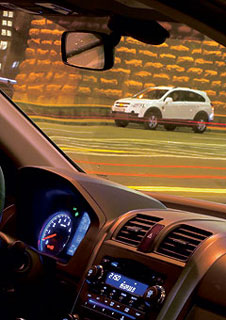 In addition, both SUV have the above parameter is not much better than Made in VAZ vehicles. Therefore, do not feed the illusions - you can leave for traffic lights with dignity unless from urban micro -lines and gazelle. With much more expensive and powerful LX300 or X5, you will feel on a par with a very slippery winter road -complete drive will ensure parity. At the same time, you can always cheer yourself up with the thought that your car eats much less gasoline. This is their main advantage.
In addition, both SUV have the above parameter is not much better than Made in VAZ vehicles. Therefore, do not feed the illusions - you can leave for traffic lights with dignity unless from urban micro -lines and gazelle. With much more expensive and powerful LX300 or X5, you will feel on a par with a very slippery winter road -complete drive will ensure parity. At the same time, you can always cheer yourself up with the thought that your car eats much less gasoline. This is their main advantage. Smoothly shaved. In the interior of Captiva, three things do not cause much delight. This is an old -fashioned instrument panel that has not undergone changes, probably since the times when the Lanos and Lacetti carried the Chevrolet cross, but the Daewoo sign. This is a monotonous fabric upholstery. And the steering wheel is thin, not seized, plastic. True, these claims relate only to the most affordable configuration. In the LT version, the steering wheel and the gearbox lever will already be lined with skin, it is possible to order a combined or completely leather interior. There are no complaints about the ergonomics of pedals. The seats are simple, but cozy, the driver's extended set of mechanical adjustments. The entire dashboard, like the relief of the doors, does not pretend to be originality, but these elements are tailored surprisingly well. Plastic panels do not rattle anywhere, the details are adjusted to each other. In the central console there is a niche in which a multimedia or navigation system suggests itself. The standard CD system is good for ease of use (there are control buttons on the steering wheel), as well as a clean and confident radio, but does not sound in the most slaughter manner. A little more complicated in the circulation of a blind air conditioner - the optimal microclimate has to be sought by trial.
We dressed well. CR-V inside looks richer due to more textured upholstery, diverse and better plastic and abundance of metallic decor. But how comparable it is with a greater price of a car, you decide. It confuses, for example, that a textile salon is offered so far in only one and not the most practical black color version. Not much richer on paints and an interior in a leather version: either black or beige. Convenient in CR-V the steering wheel. The steering wheel has a sporting look, is regulated both by departure and in height. The steering wheel switches work clearly, the pedal node is convenient, you do not need to reach the handle of the checkpoint at all. The mechanical settings of the seats are extensive, and the landing has a long trip. Passengers on the back sofa will also be satisfied with their places - you can install the back at a comfortable angle. I want to scold the Hondians for an extremely modest volume of glove boxes (the upper compartment is not even suitable for this definition). And to praise - for the modern and beautifully illuminated instrument panel and in the same spirit, the illumination of the central console. They really cause a business class car.
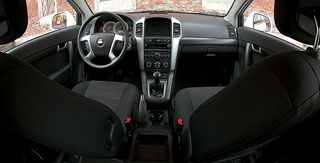 Chevrolet Captiva 2.4
Chevrolet Captiva 2.4 Gasoline engine, 4 in a row
Working volume (cubic cub) 2405
Power (L.S. at about/min) 133 at 5000
Moment (nm at rpm) 220 at 2200
Front or complete drive
Gearbox 5-speed, mechanical
Length/width/height (mm) 4635/1870/1720
Equipped mass (kg) 1685 (1760 AWD)
Maximum speed (km/h) 183
Acceleration to 100 km/h (c) 11.5
Fuel consumption (medium, l/100 km) 9.1 (9.3 AWD)
Price in Moscow (price of the tested car) from $ 29,990 ($ 30 690)
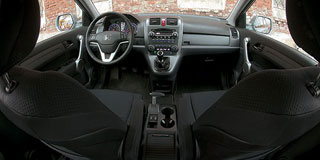 Honda CR-V 2.0
Honda CR-V 2.0 Gasoline engine, 4 in a row
Working volume (cubic meter) 1997
Power (L.S. at rpm) 150 at 6200
Moment (nm at rpm) 192 at 4200
The drive is connected full
Gearbox 6-speed, mechanical
Length/width/height (mm) 4530/1820/1675
Mass weight (kg) 1500
Maximum speed (km/h) 190
Acceleration to 100 km/h (c) 10.2
Fuel consumption (city/highway, l/100 km) 10.4/6.7
Price in Moscow (price of the tested car) from $ 33,800 ($ 35 800)
We thank for help in organizing the shooting of LLC Honda Motor Rus, (495) 745-2080, and General Motors CIS, (495) 785-1100.
Text Ruslan Tarasov photo Andrey Danilov
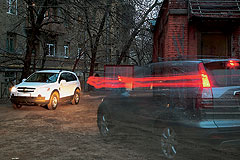
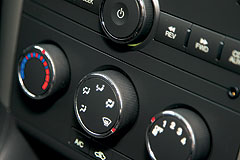
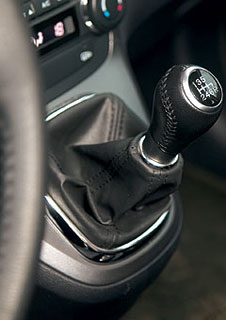
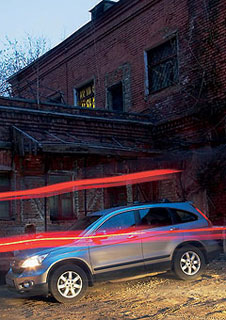
Source: "Autopilot"
Video test drives Chevrolet Captiva since 2006
Chevrolet Captiva Crash Video since 2006
CHEVROLET CAPTIVA test drives since 2006
Chevrolet Captiva Crash Test since 2006
Krassh Test: Detailed Information31%
Driver and passengers
17%
Pedestrians
36%
Children-passengers

